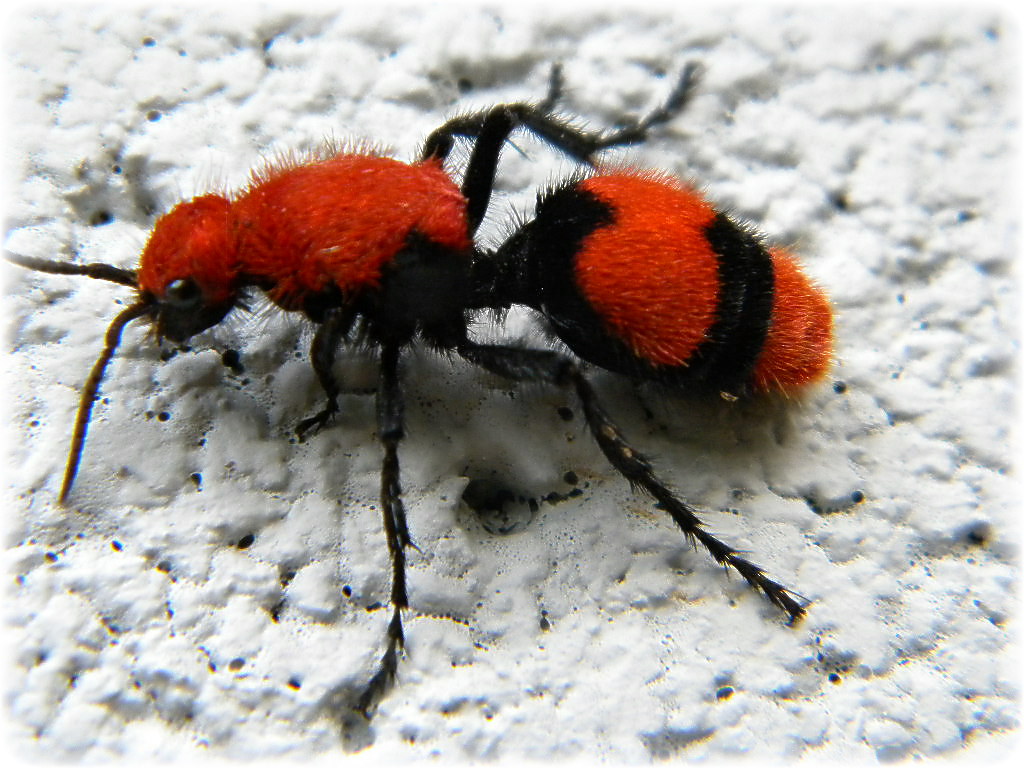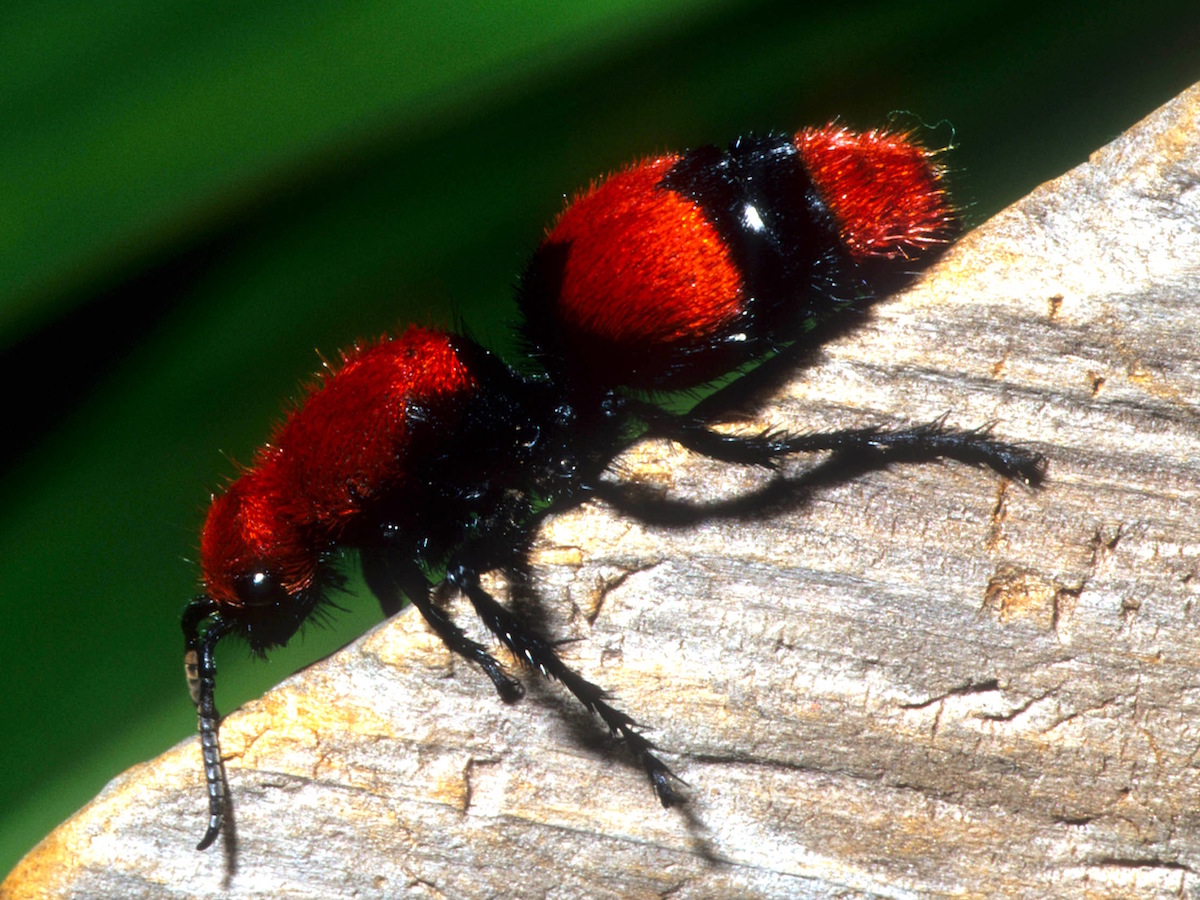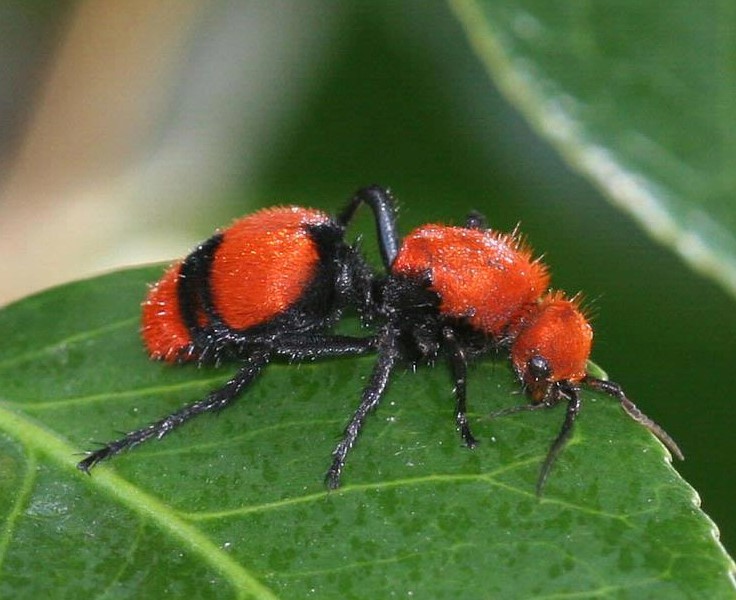Unmasking The Cow Killer Ant: Nature's Fiery Red Enigma
Imagine stumbling upon a creature that looks like a giant, fuzzy ant, strikingly adorned in vibrant red and black. Its appearance is captivating, almost alluring, yet it carries a fearsome reputation. This is the enigmatic cow killer ant, a common name for the insect scientifically known as Dasymutilla occidentalis. Despite its misleading moniker, this fascinating insect is not an ant at all, but rather a species of solitary wasp, renowned for one of the most excruciating stings in the insect world.
Often referred to as the "red velvet ant" due to its dense, hair-like covering, this creature embodies nature's paradox: breathtaking beauty coupled with a potent defense mechanism. Its presence often sparks curiosity, fear, and a host of misconceptions. In this comprehensive guide, we will delve deep into the world of the cow killer ant, exploring its true identity, unique biology, the truth behind its infamous sting, and how we can coexist with this remarkable, brightly colored insect. Prepare to unravel the mysteries of this "velvet demon" and gain a newfound appreciation for its vital, albeit prickly, role in our ecosystems.
Table of Contents
- What Exactly is a Cow Killer Ant? Debunking the Myth
- The Striking Appearance of the Red Velvet Ant
- Aposematic Coloration: Nature's Warning Label
- The Cow Killer's Solitary Life and Parasitoid Nature
- The Infamous Sting: Pain Without Peril?
- Life Cycle and Reproduction: A Glimpse into Their World
- Where Do Cow Killer Ants Live? Habitat and Distribution
- Identifying and Coexisting with Cow Killer Ants
- Conclusion: Respecting the Red Velvet Ant
What Exactly is a Cow Killer Ant? Debunking the Myth
The very name "cow killer ant" conjures images of a formidable, bovine-slaying insect. However, this common name is a dramatic exaggeration, primarily stemming from the intense pain inflicted by its sting, rather than any actual lethality to livestock. The most crucial fact to understand about the cow killer ant is that it is not an ant at all. It belongs to the family Mutillidae, a group of wasps, and is more accurately known as a "velvet ant." The term "ant" is a misnomer, likely arising from the wingless appearance of the female, which scurries across the ground much like a large, fuzzy ant. This deceptive resemblance is a fascinating aspect of its biology, contributing to its mystique and the confusion surrounding its true identity.The Scientific Name: Dasymutilla occidentalis
The scientific name for the most prominent species known as the cow killer ant is *Dasymutilla occidentalis*. This classification immediately places it within the order Hymenoptera, which includes bees, ants, and wasps. The genus *Dasymutilla* encompasses many species of velvet ants, but *D. occidentalis* stands out due to its striking red and black coloration and its relatively large size, often reaching up to an inch in length. Understanding its scientific classification helps to demystify its common name and correctly identify it as a wasp, not an ant. This distinction is vital for understanding its behavior, ecology, and the true nature of its defense mechanisms. According to entomological classifications, recognizing it as a wasp helps in comprehending its life cycle and its role as a parasitoid.Why "Ant"? A Case of Mimicry
The reason *Dasymutilla occidentalis* is often mistaken for an ant lies in a remarkable evolutionary adaptation known as mimicry. Female velvet ants are wingless, resembling large, hairy ants as they forage on the ground. This mimicry serves a dual purpose. Firstly, it allows them to move effectively through dense vegetation and into the nests of their hosts. Secondly, it might offer a degree of protection, as many predators might associate the "ant" appearance with the aggressive nature or chemical defenses of true ants, making them less appealing prey. However, the males of the species are winged and look much more like typical wasps, though they lack a sting. This sexual dimorphism further contributes to the confusion surrounding the cow killer ant's identity, as the two sexes appear so different.The Striking Appearance of the Red Velvet Ant
The most defining characteristic of the cow killer ant, or red velvet ant, is its stunning appearance. Its body is covered in dense, velvety hairs, typically a brilliant, fiery red or orange, interspersed with patches of stark black. This vivid coloration makes it highly conspicuous against most natural backdrops. The specific pattern can vary slightly between individuals and subspecies, but the general scheme of red and black is consistent. This velvety texture is not merely for show; it provides a protective layer, making it difficult for predators to grasp, and also contributes to its overall toughness. The robust exoskeleton beneath the hairs further enhances its resilience, allowing it to withstand considerable physical pressure. This combination of striking color and tough exterior is a clear signal to potential threats.Aposematic Coloration: Nature's Warning Label
The vibrant red and black hues of the cow killer ant are not just aesthetically pleasing; they serve a crucial biological purpose known as aposematic coloration. This is nature's way of broadcasting a clear warning to potential predators: "I am dangerous, stay away!" In the animal kingdom, bright, contrasting colors often signal toxicity, a painful defense, or an unpleasant taste. For the red velvet ant, this coloration is a direct advertisement of its formidable sting. Predators that have previously encountered a painful experience with such brightly colored insects learn to associate the warning colors with unpleasant consequences and, therefore, tend to avoid them. This evolutionary strategy is highly effective, deterring birds, lizards, and other insectivores from attempting to make a meal out of this particular wasp. The aposematic display is a testament to the power of visual communication in the wild, allowing the cow killer ant to often avoid confrontation altogether.The Cow Killer's Solitary Life and Parasitoid Nature
Unlike many social wasps that live in colonies, the cow killer ant leads a solitary existence. Each female forages independently, seeking out hosts for her offspring. This solitary nature is a key aspect of their biology, distinguishing them from more commonly known social wasps like yellowjackets or hornets. Their independence means they do not aggressively defend a nest or territory in the same way social insects do, reducing the likelihood of mass attacks. However, their solitary nature does not make them less formidable when threatened individually.A Hunter of Larvae: Its Role in the Ecosystem
The most fascinating aspect of the cow killer ant's life cycle is its parasitoid nature. Female velvet ants are not predatory in the conventional sense; they do not hunt and consume other insects for their own sustenance. Instead, they are highly specialized parasites of other insects' larvae and pupae, particularly those of ground-nesting bees and wasps, such as bumble bees. The female cow killer ant will actively seek out the underground nests of these host insects. Once a nest is located, she enters it, finds a host larva or pupa, and lays a single egg on or near it. Upon hatching, the velvet ant larva consumes its host, effectively killing it. This strategy, while seemingly brutal, plays a vital role in regulating the populations of other insects, making the cow killer ant a natural form of biological control. This parasitic relationship is a complex and often overlooked aspect of their ecological importance, demonstrating how these seemingly fearsome creatures contribute to the balance of their environment.The Infamous Sting: Pain Without Peril?
The reputation of the cow killer ant largely stems from its incredibly potent sting. It is widely regarded as one of the most painful insect stings in North America, often compared to being stung by a bee, but with a significantly amplified intensity. The pain is described as immediate, searing, and long-lasting, leading to the dramatic "cow killer" moniker. When threatened, particularly if stepped on or handled, the female will deliver a powerful sting. This defensive mechanism is incredibly effective at deterring predators and any creature that might pose a threat. The sting itself is delivered by a long, needle-like ovipositor (egg-laying tube) that also functions as a venom delivery system. While the pain is severe, it's crucial to understand the actual danger level.Is it Really a "Cow Killer"? Separating Fact from Fiction
Despite its common name and the intense pain it inflicts, the cow killer ant's sting is generally not dangerous to humans or large animals like cattle, beyond the immediate, excruciating pain. The venom is primarily designed to incapacitate insect larvae, not to be lethal to large mammals. While it can cause extreme discomfort, localized swelling, and redness, it does not typically lead to systemic poisoning or life-threatening reactions in healthy individuals, unless there is an underlying severe allergy, similar to a bee or wasp allergy. The notion that it "can kill cattle" is a pervasive urban legend, likely born from the sheer agony experienced by anyone unfortunate enough to be stung. In reality, a cow might react violently to such a painful stimulus, potentially injuring itself, but the venom itself is not potent enough to cause death in a large animal. Therefore, while respect for its sting is certainly warranted, fear of its lethality to humans or livestock is largely unfounded. If stung, the recommended treatment is similar to other insect stings: clean the area, apply a cold compress, and take over-the-counter pain relievers. Seek medical attention if you experience signs of an allergic reaction, such as difficulty breathing, widespread rash, or swelling away from the sting site.Life Cycle and Reproduction: A Glimpse into Their World
The life cycle of the cow killer ant, like that of many parasitoid wasps, is intricately linked to its host. It begins when the female wasp, having mated with a winged male, seeks out the nests of ground-dwelling bees or other wasps. Once a suitable host larva or pupa is located, she lays a single egg on or near it. The egg hatches into a legless, grub-like larva, which then proceeds to consume the host from the inside out. This process ensures the developing velvet ant larva has a ready and ample food supply. After consuming its host, the larva pupates within the host's nest or a nearby chamber. The pupal stage is a period of metamorphosis, during which the larva transforms into an adult wasp. Once fully developed, the adult velvet ant emerges from the pupal casing, ready to begin its own life cycle of foraging, mating, and reproduction. The males, being winged, will fly in search of females, while the wingless females will continue their terrestrial search for host nests. This life cycle typically takes several weeks to months, depending on environmental conditions and host availability.Where Do Cow Killer Ants Live? Habitat and Distribution
The cow killer ant, *Dasymutilla occidentalis*, is primarily found in the eastern and southern United States, extending west into states like Texas and Oklahoma. Its preferred habitats are diverse but generally include sandy areas, open woodlands, fields, and even suburban lawns and gardens. Essentially, any area where its host insects (ground-nesting bees and wasps) are abundant can potentially be home to velvet ants. They are often seen scurrying across bare patches of ground, sidewalks, or driveways, especially during the warmer months of summer and early fall. Their solitary nature means you won't find large aggregations of them, but rather individual females diligently searching for hosts. While they are resilient and adaptable, their presence is a good indicator of a healthy ecosystem that supports a variety of insect life, including their specific hosts. Understanding their preferred habitats can help in avoiding accidental encounters and respecting their space.Identifying and Coexisting with Cow Killer Ants
Identifying a cow killer ant is relatively straightforward once you know what to look for. The key identifiers are their bright, velvety red and black coloration, their robust, hairy body, and the fact that the females are wingless and move quickly along the ground like an ant. Males, though winged, also share the distinctive coloration. If you encounter one, the best course of action is simply to observe from a distance and leave it undisturbed. They are not aggressive by nature and will only sting if directly threatened, handled, or accidentally stepped on. Here are some tips for coexisting: * **Observe, Don't Touch:** Admire their beauty from a safe distance. Never attempt to pick up a cow killer ant, even with gloves. * **Wear Footwear Outdoors:** Especially in grassy or sandy areas where they might be present, wearing closed-toe shoes can prevent accidental stings. * **Clear Debris:** Keeping your yard free of leaf litter, logs, and other debris can reduce potential hiding spots for these wasps and their hosts. * **Educate Others:** Share accurate information about the cow killer ant with family and friends to dispel myths and promote safe interactions. * **Natural Pest Control:** Remember that these wasps play a beneficial role in controlling populations of other insects, so they are not typically considered pests unless they become a nuisance due to frequent encounters in high-traffic areas. In such cases, simple exclusion methods or professional pest control might be considered, but generally, their presence is not a cause for alarm.Conclusion: Respecting the Red Velvet Ant
The cow killer ant, or red velvet ant, is a creature of striking contrasts: beautiful yet formidable, ant-like yet a true wasp, and infamous for a sting that is excruciatingly painful but rarely dangerous. We've explored its scientific identity as *Dasymutilla occidentalis*, its dazzling aposematic coloration, its solitary and parasitoid lifestyle, and the truth behind its legendary sting. It's clear that while its common name exaggerates its lethality, it accurately reflects the intense discomfort it can inflict. Understanding these fascinating insects allows us to appreciate their unique place in the natural world. They are not aggressive pests but rather beneficial components of our ecosystems, helping to regulate populations of other ground-nesting insects. By debunking myths and embracing accurate knowledge, we can learn to respect the cow killer ant for what it truly is: a remarkable example of nature's ingenuity, a warning label in vibrant red and black, and a testament to the power of evolution. Have you ever encountered a red velvet ant? What was your experience? Share your thoughts and questions in the comments below! If you found this article insightful, consider sharing it with others who might be curious about this captivating creature, and explore our other articles on fascinating insects and their roles in our environment.
"Cow Killer"-Ant | The cow killer ant or eastern velvet ant … | Flickr

Red Velvet Ants & Cow Killer Ants: Stinging Ant Profile

Cow Killer Ant